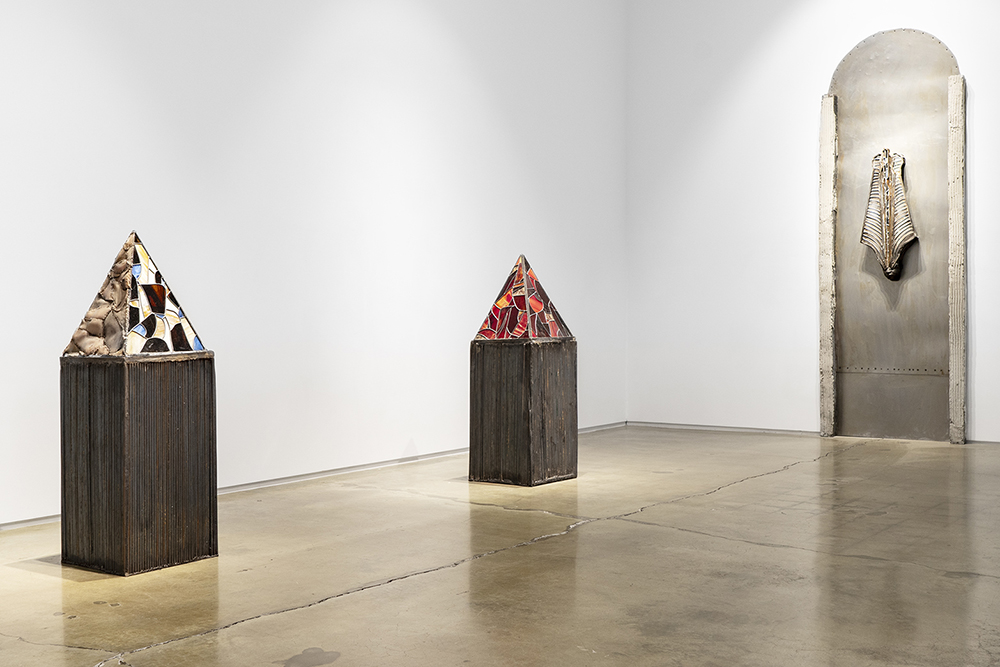A church is a grand gesture to the community it serves and sustains. At its best it’s a hub, as well as a display of worship, tradition, sacrament and humility. A chapel by contrast is a modest little space—distinguished from the former by its size more than anything else—not always purpose-built or dedicated for worship, but used as such anyway for prayer and meditation. It’s sometimes erected for private use and built to an individual’s specifications. There is no bishop overseeing a chapel.
The first room in “Progeny,” Chiffon Thomas’ exhibition at Michael Kohn Gallery, had the gravity of a church. The expansive, spare gallery is large enough to hold a congregation. Centrally installed within it was an altarpiece—a low, ship-shaped container on the floor, lined with rusted metal tubes, which overflowed with sculptures of miniature human feet. Behind it, a trio of massive screens in the same material, which jointly span the entire back wall, stood as a sort of reredos behind the ship-altar with three recessed medium tabernacles—each holding a bust of a saintly figure. The stage they created was hedged by a pair of upside-down cement cones several feet high, the lower part of each one growing rows of the same feet, now cast in concrete.

Chiffon Thomas, “Progeny” (exhibition view), 2024. Courtesy of the artist and Michael Kohn Gallery.
Taken in full, the arrangement of hundreds of miniature sculptures (all untitled, 2024) was, like a church, a monument. This show was a memorial to a slave ship and overflowed with the fragments of countless people who have passed through such a vessel. The sculptures in the wall niches and on surrounding walls presented face-casts fused to patterned stained-glass forms with heavy mounds of sutured steel to create figures who are estranged from the rest of themselves. They evidence the artist’s references, which encompass Zulu traditional craft, the art of Ancient Egypt and their own childhood memories of going to church with family, all welded to feel worked over and weathered, even in as they are cast from 3D-model masks to futuristic effect.
In an adjacent gallery, a colosseum sized for the room was presented in ruins, the columns left standing as if the roof had caved in and crumbled in a neat line down the middle of the floor. Geometric stained-glass windows, seemingly salvaged from the rubble, leaned against the wall. Taken jointly, the two installations suggested a church in two phases. The first as it is often presented—and as it wants to be seen: imposing, commanding, reverential. The second, broken and yet conversely suggesting a way forward. Whether breaking the church is a means of destruction or engagement—introducing possibilities for reordering or repair into another form—the artist left as an open question.
The third and final space was a chapel. Here, a pair of stout obelisks were topped with stained-glass pyramids quilted in swooping lines—one in reds, one in the hues of earth and sky—with a pair of soft concrete arches holding a pair of the artist’s sculptures up to face each other. The room’s human scale and sensibilities were seen in the sutures of foam, leather, glass and metals in the objects in the spare space, opening up like the lines of a hand’s palm. It invited self-reflection in solitude, the way a chapel might. It was a place of devotion turned inside out, seams exposed.


